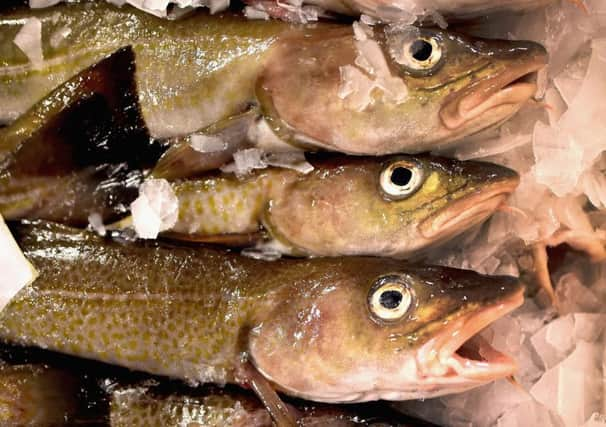More mercury in our fish as ecosystem sees changes


Increased rainfall and melting snow and ice are expected to increase the flow of organic matter into aquatic ecosystems in large parts of the northern hemisphere. Research conducted in Sweden predicted that this could lead to a sevenfold increase in the mercury content of zooplankton, the tiny marine animals at the end of the ocean food chain.
As the small creatures are eaten by larger ones, the mercury is concentrated until it reaches high enough levels in large fish such as cod to pose a potential risk to human health. In fish and other sea creatures, the metal is present in an organic form called methylmercury.
Advertisement
Hide AdAdvertisement
Hide AdMercury can damage nerves. Babies may be especially at risk from exposure to fish-derived mercury while their brains and nervous systems are developing in the womb.
Up to 17 in 1,000 children from subsistence fishing communities in Brazil, Canada, China, Columbia and Greenland have been shown to suffer from mental impairment due to the consumption of mercury-contaminated seafood, according to the World Health Organisation.
The new research showed that organic run-off linked to global warming is likely to encourage the growth of bacteria, which go on to dominate the aquatic food web.
A “heterotrophic” food web (one which is based around bacteria generally) has more levels of different organisms than an “autotrophic” food web founded on phytoplankton – microscopic ocean plants – alone.
With its greater number of stages, a heterotropic food web may have the effect of increasing mercury concentrations, experts believe.
Lead researcher Dr Erk Bjorn, from Umea University in Sweden, said: “Our study confirms this hypothesis and shows that an increase of 15 per cent to 20 per cent of the content of organic matter in our waters can cause a shift from an autotrophic-based to a heterotrophic-based food web and lead to the content of methylmercury increasing twofold to sevenfold in zooplankton.”
He described the findings, published in the journal Science Advances, as “critical”.
The predicted higher levels of organic matter run-off were in accordance with climate change scenarios for large regions of the northern hemisphere, including the Baltic Sea, said the scientists.
Advertisement
Hide AdAdvertisement
Hide AdAn up to sevenfold increase in levels of zooplankton methylmercury was said to be roughly equivalent to the amount by which mercury pollution in ecosystems had risen during the entire industrial era since 1850.
A major example of the way mercury contamination in the oceans can harm public health was seen in Minamata, Japan, where thousands of people suffered from a mystery nerve disorder between 1932 and 1968.
It was eventually traced to a factory that had discharged waste containing high levels of methylmercury into Minamata Bay. The poison was taken up by fish and shellfish which were consumed by locals.